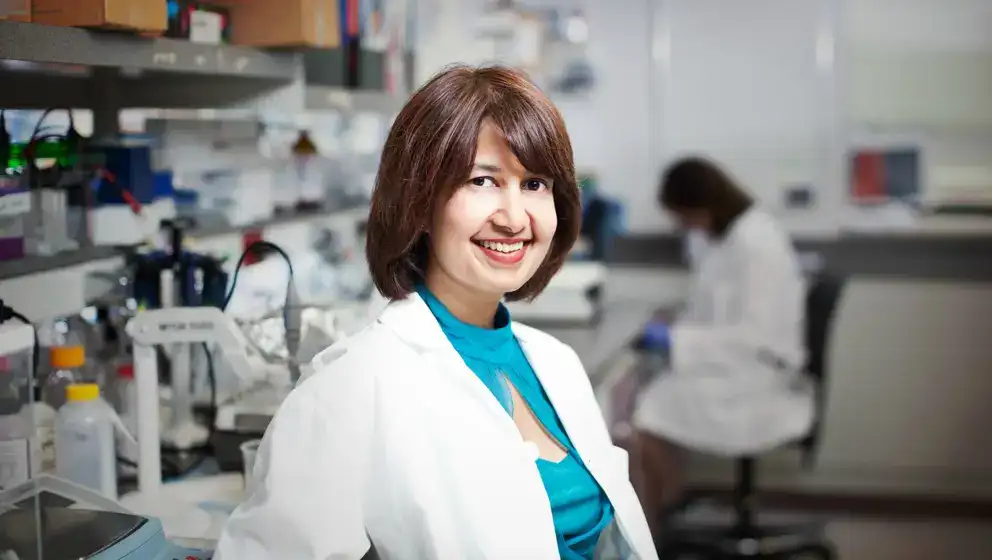The 14-month-old had severe heart failure and nobody knew why. It was up to Dr. Seema Mital and her team to determine if a heart transplant was needed to save the little girl.
She came to Dr. Mital having undergone surgery at another hospital for holes in her heart. Despite the operation, her small heart kept failing.
Dr. Mital, a cardiologist and senior scientist in genetics and genome biology at Toronto’s Hospital for Sick Children, discovered the cause of her heart failure: the toddler’s left coronary artery was arising from an unusual position and this was restricting blood flow to her heart.
Before she could undergo another surgery to fix the artery, the child suffered a cardiac arrest. She was quickly connected to an artificial heart-lung machine to keep her alive. Surgeons successfully moved the artery to the correct position and she was able to come off the heart-lung machine just days later.
She didn’t need a heart transplant. But it took six months of intense rehabilitation before she could return home.
Almost three years later, the little girl is healthy and happy, with normal heart function. She takes no medications and is living an active life like any four-year-old.
“The family is so grateful to see their daughter cured, and to this day they send us pictures and stories of how well she is doing,” said Dr. Mital.
For Dr. Mital, this child’s survival encapsulates how advances in cardiac imaging, surgery and medical therapies are helping children overcome congenital heart defects. Sixty years ago, less than 20% of infants born with complex heart defects reached adulthood. Today, more than 90% do.
Genes hold the key
As both a clinician and a researcher, Dr. Mital, the Heart & Stroke/Robert M. Freedom Chair in Cardiovascular Science, hopes to advance childhood heart disease treatment even further.
“This is a field where you can actually offer children something, you can fix them for life,” said Dr. Mital.
Her quest to treat children’s heart disease begins with finding the genetic causes. “That’s what excites me the most. If we find these genes, it will allow us to do drug discovery to treat childhood heart disease and prevent the need for repeated surgeries,” she said.
This is a field where you can fix children for life.
A congenital heart defect happens when the heart or the blood vessels near the heart don't develop normally before birth. It’s one of the most common birth defects, affecting one in every 100 babies.
Some defects are so small they don’t require treatment while others can be corrected with a single surgery. “For minor heart defects parents can expect an absolutely normal healthy life for their child,” stressed Dr. Mital.
But 25% of these defects are complex. A baby may be born with a heart chamber absent, or even one side of their heart missing.
In those cases, it takes three to four surgeries in the first three years of life, then half a dozen more over the course of their childhood. Some end up needing a heart transplant.
“For most of them we can offer some surgical option but they have to be followed by a cardiologist for the rest of their life,” said Dr. Mital.
Personalized treatments in sight
In most cases, there is no known cause. “That makes it difficult for us to advise families how they may be able to prevent the defect, or allow us to recognize it early enough so that we can offer earlier interventions before things get too severe,” Dr. Mital said,
Research has become so advanced Dr. Mital and her team can now take skin cells from a child and transform them in a lab dish to heart cells. She can then study how these newly formed heart cells react to new medications.
If tests can be done directly on a patient’s cells, there’s a higher chance the medications will be effective. “You might even find a targeted therapy for that particular patient,” said Dr. Mital.
For her term as chair, Dr. Mital has set a goal. “In five years I hope to find out more about what is causing heart disease in children, but more importantly I hope to have found a new drug that will help them in the long term,” she said.
To complement her research, she also intends to work towards creating a research pipeline that allows discoveries to be turned into treatments faster.
“It takes years to develop new treatments and you want to make sure they’re safe, but there are ways to expedite that so that a newborn child is not waiting 20 years before he or she can see the results of research,” she said.
- Learn more about congenital heart disease.
- Learn more about Heart & Stroke research.
